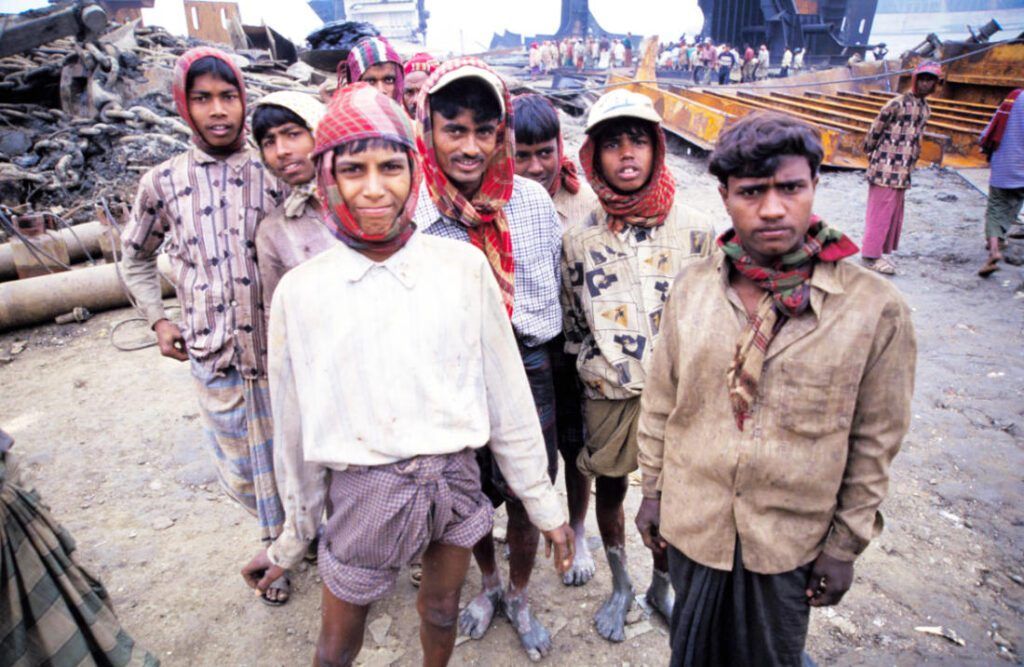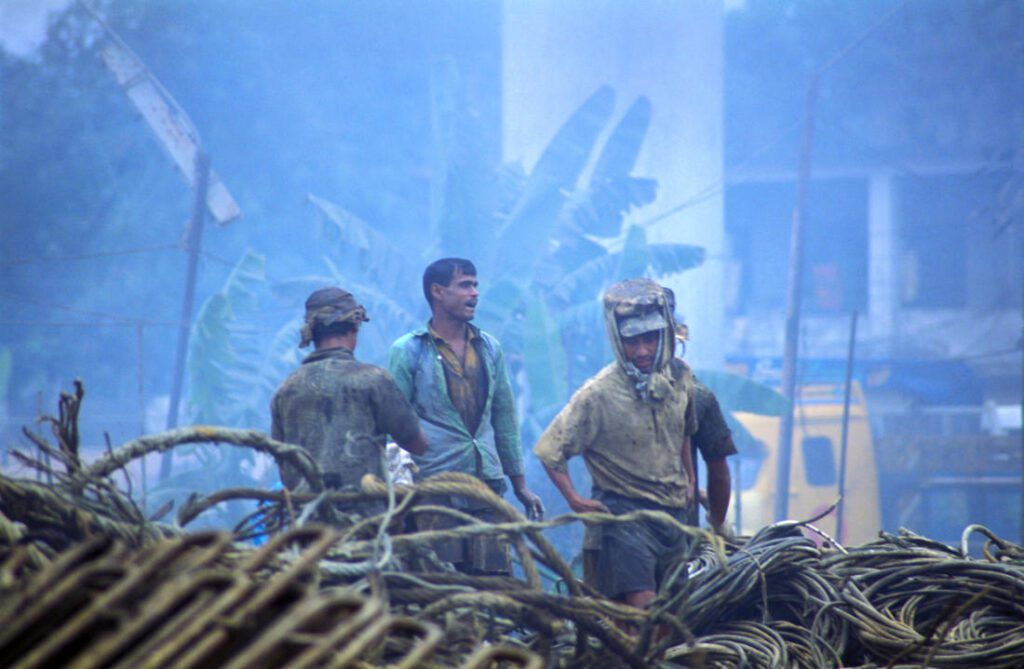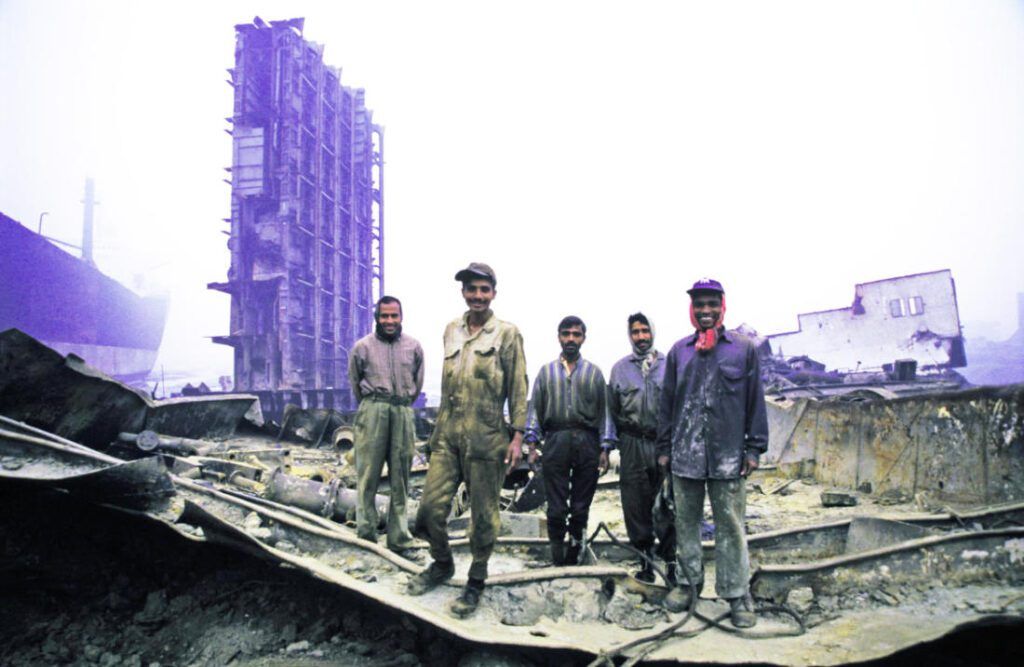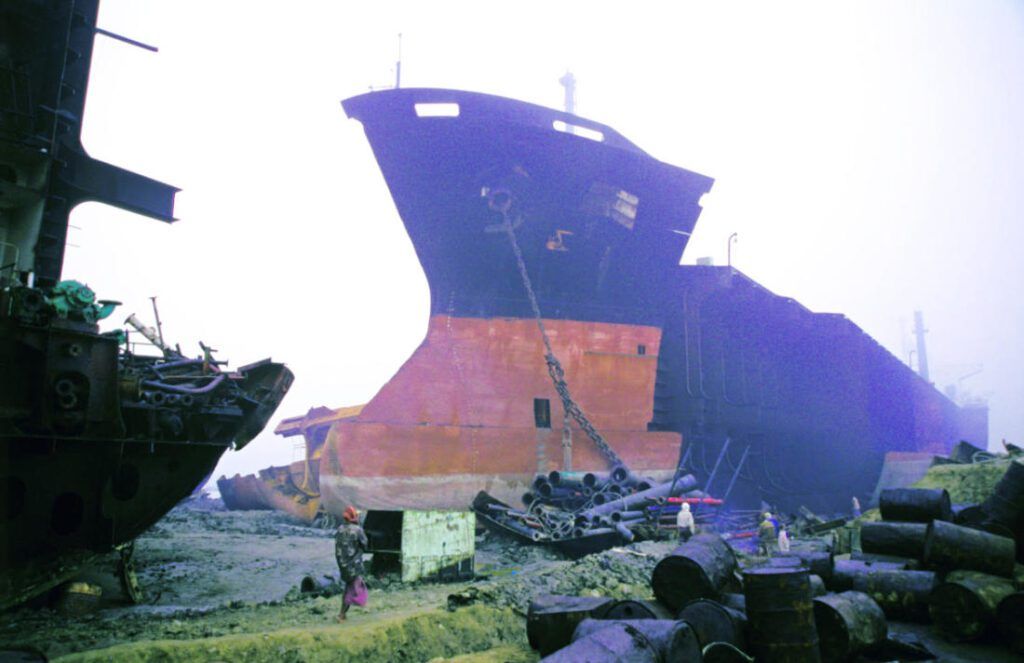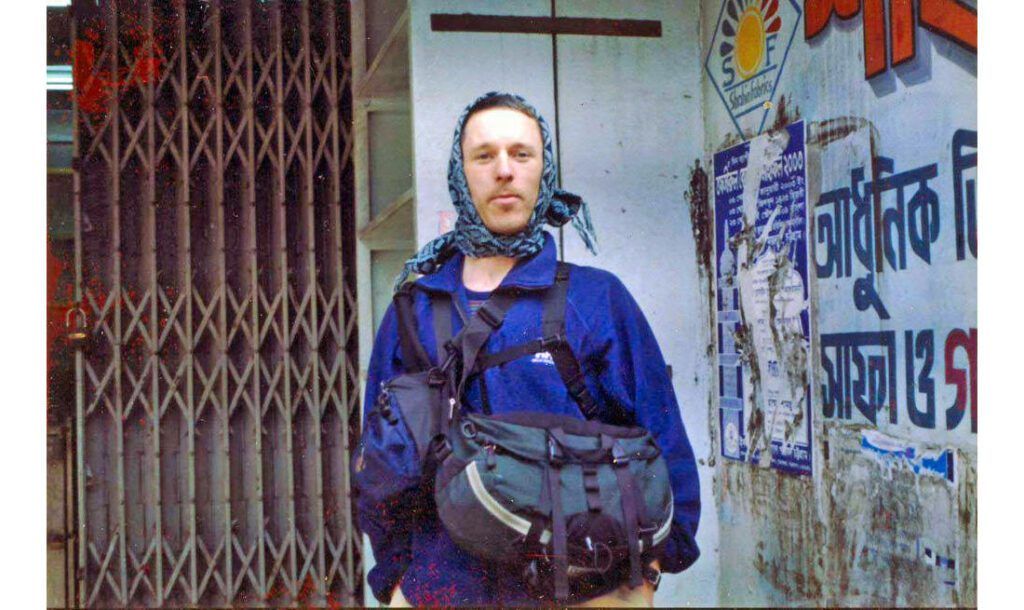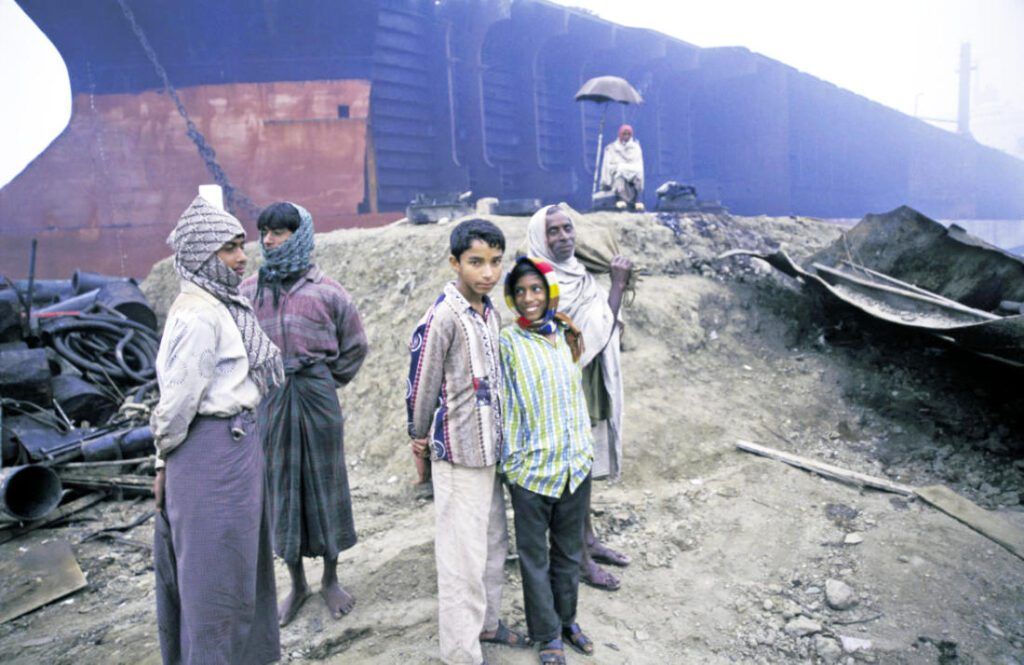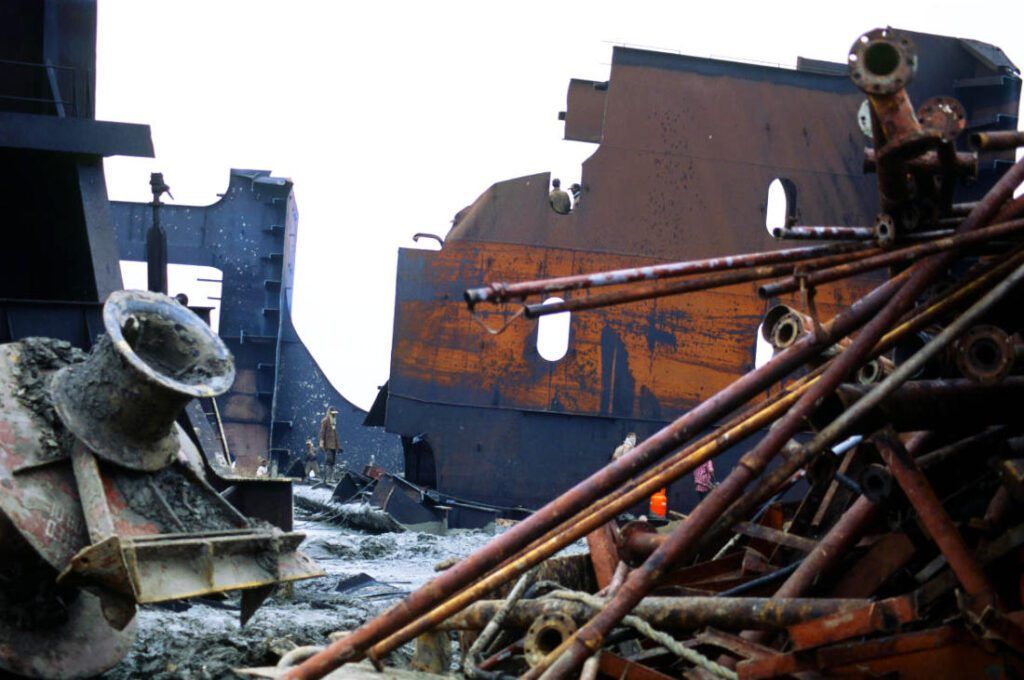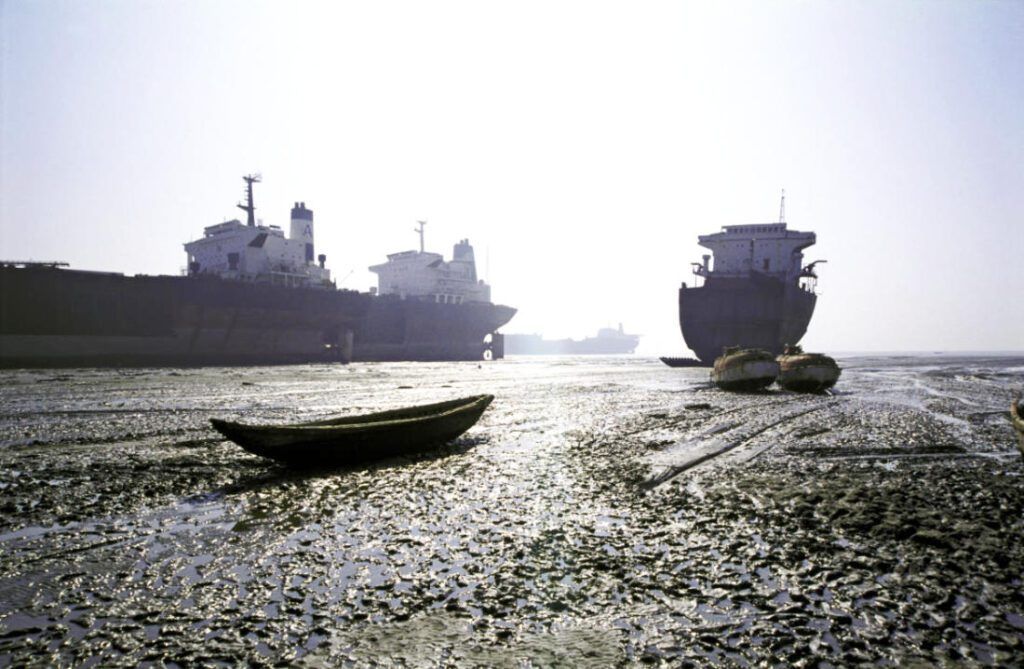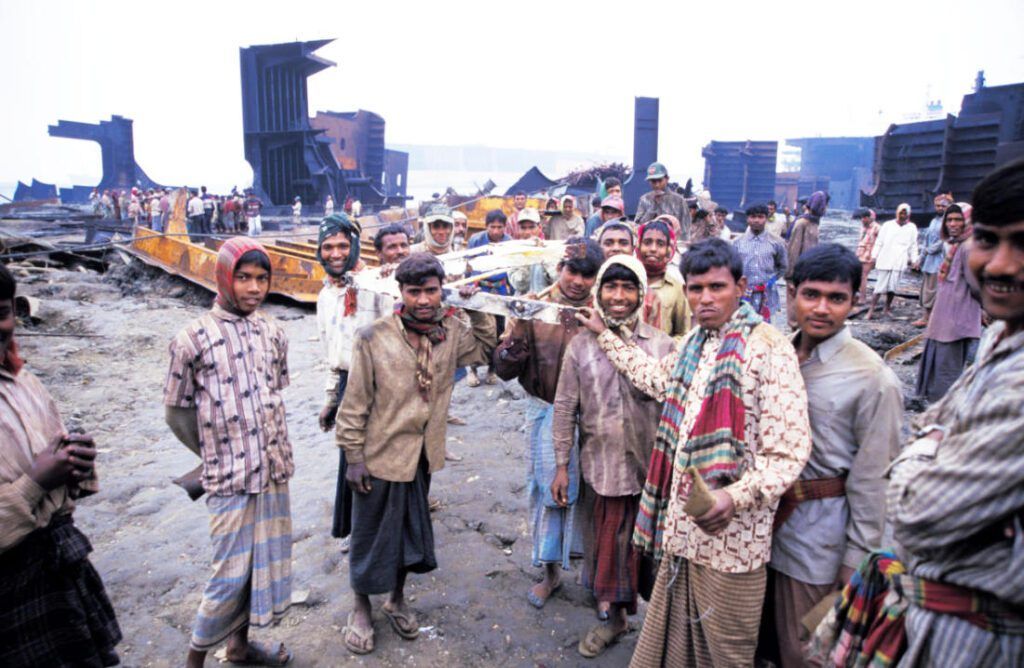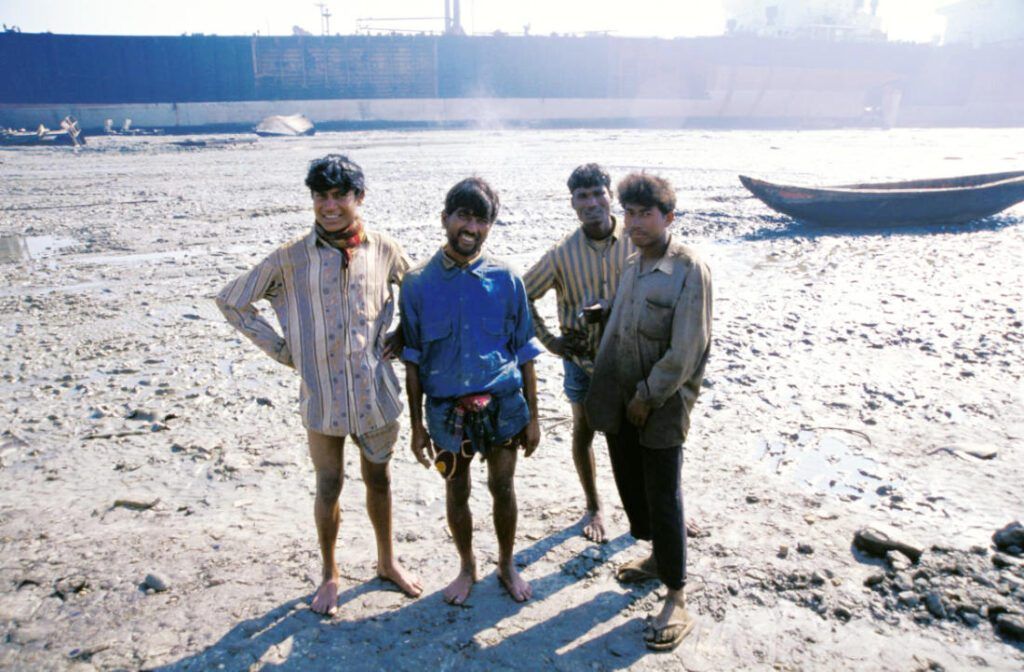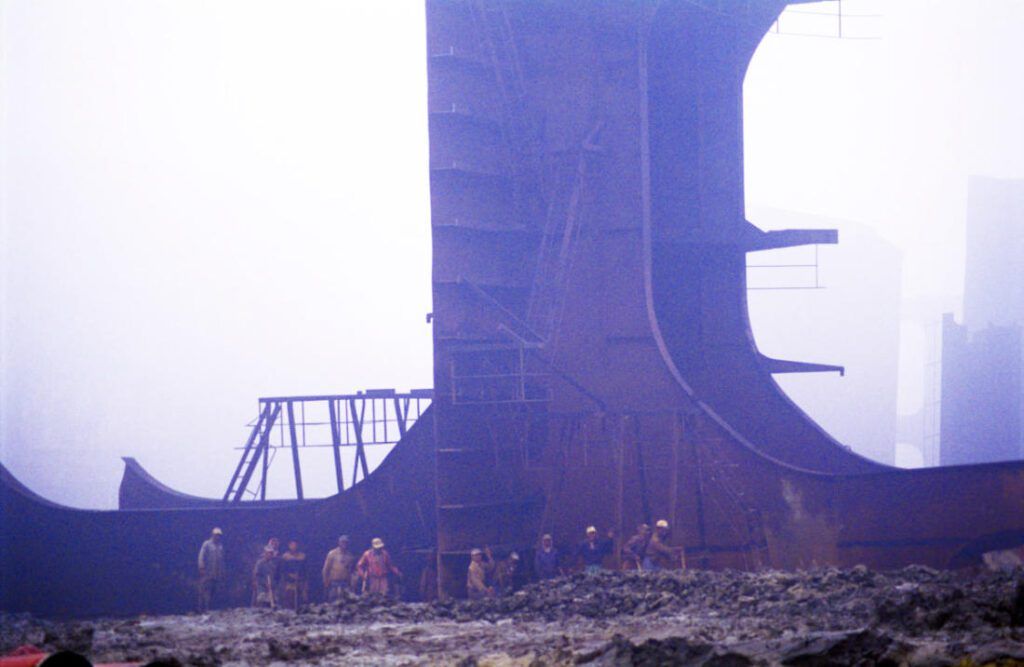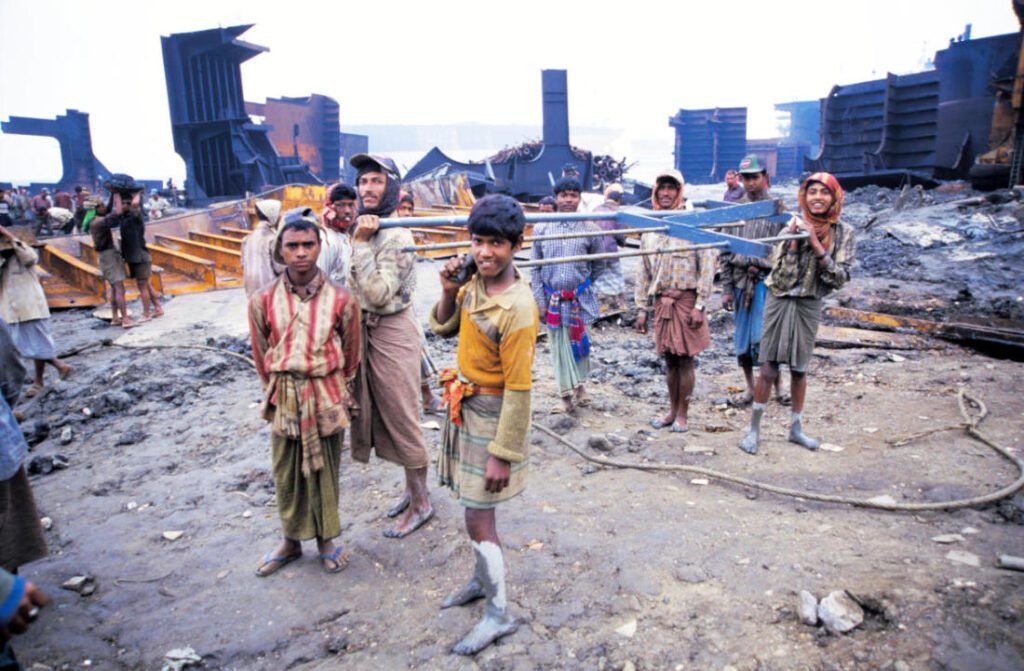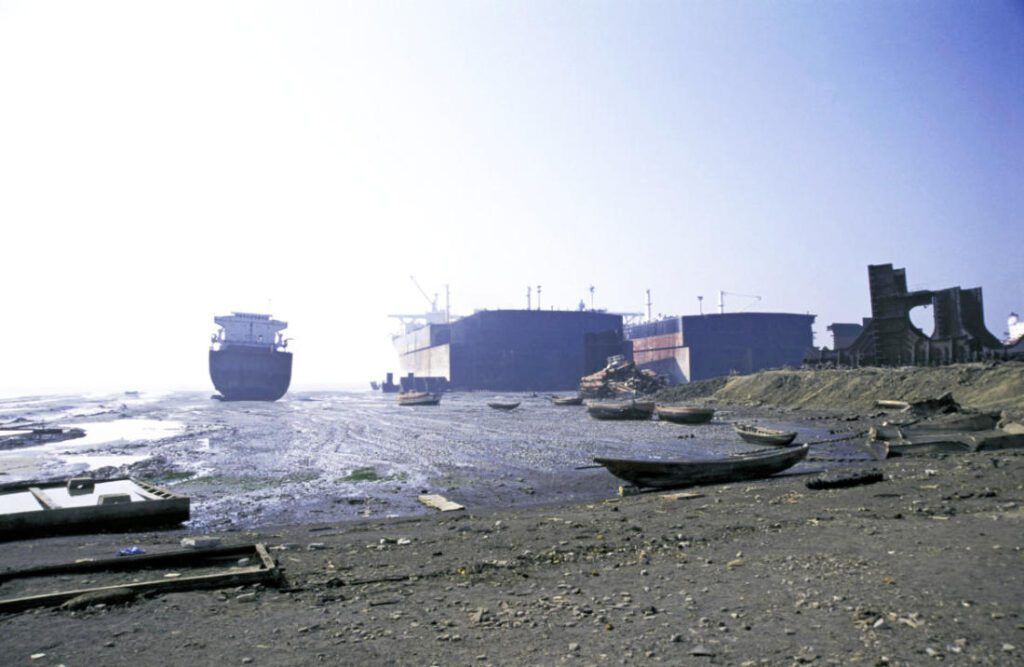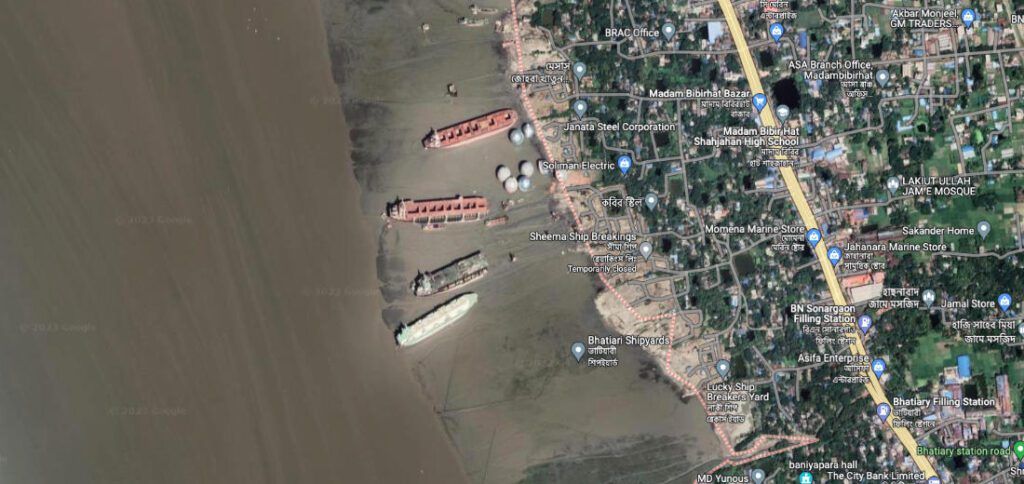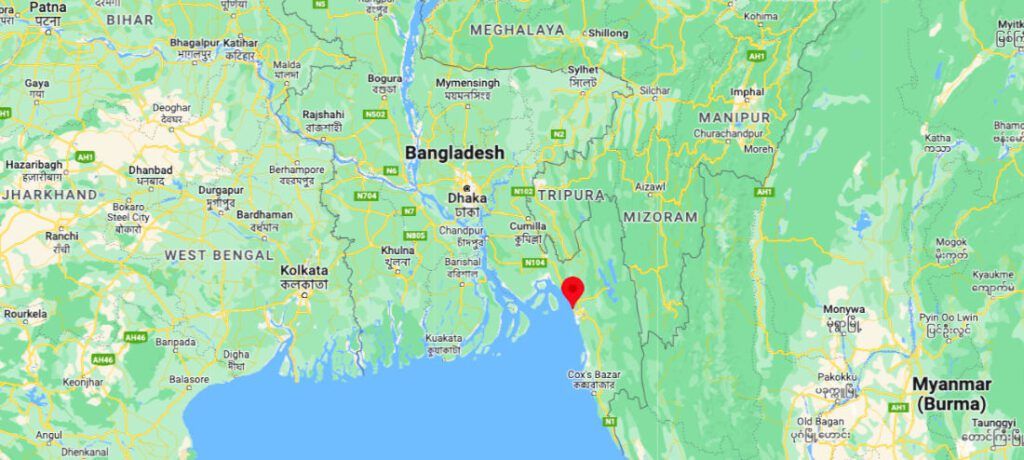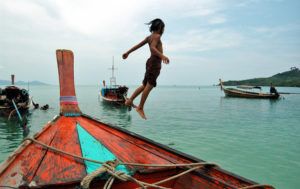The Scary Truth Behind my Bangladesh Ship Yards Photos
Although I’d never been to Bangladesh before, my mission was the Bangladesh ship breaking yards. It was Jan/Feb 2003 and this is what happened.
Bribed the disgruntled gate man, slipped through a small iron door, and what I saw was indelibly burnt into my mind forever…
How do you recall the moment you decide to go to Chittagong, Bangladesh to photograph a massive ship breaking yard?
(nb: I sometimes refer to ship breaking as ship recycling or ship dismantling)
The idea had certainly been swimming around my head for a while.
As it seemed outrageously crazy there was a good chance I’d attempt it.
What is ship breaking?
My destination was Batiary ship breaking yards, or Faujderhat, a 16 kilometre long beach 20 kilometres (12 miles) north-west of Chittagong, Bangladesh.
But what actually is ship breaking?
“Ship breaking is a type of ship disposal involving the breaking up of ships for scrap recycling. Most ships have a lifespan of a few decades before there is so much wear that refitting and repair become uneconomical. Ship breaking allows materials from the ship to be recycled and reused.”
Of course, to be honest, there’s nothing scary whatsoever about Bangladesh, and some remote tidal mud flats that house hundreds of ships in various skeletal states of disrepair.
The challenge was to get into the ship dismantling yards and get some good photographs.
There were other challenges to consider too:
- Dealing with the language
- Finding a knowledgable guide who I could trust
- Good weather for photography
- Negotiating transport
- Toxic substances / hazardous materials
- Wondering why on earth I was in Bangladesh...
Where did ship breaking come from?
How the ship breaking yards came about is a phenomenal story of ground-level entrepreneur brilliance.
Apparently, in 1960, after a severe cyclone, a Greek ship was stranded on the shores of Sitakunda, Chittagong. The ship, the M D Alpine, couldn’t be re-floated and sat there for several years.
5 years later, Chittagong Steel House bought the ship and had it scrapped. Although it took years to scrap the ship, this gave birth to the Bangladesh ship breaking industry.
You could imagine them looking at this huge ship just plunked there, with no chance of any movement, and thinking:
Well if we can’t move it, can we take it apart and sell it, piece by piece?
Ship owners had a good day
So around 1969, ship breaking was introduced to the area.
As well as ship breaking and building sailing ships, Bangladesh exports garments, knitwear, frozen food, jute, leather, tea and chemical products. Country boats trade cotton, rice, spices, sugar and tobacco.
I guess if you have one ship to scrap (and employ people/make profits), then why not get more? After all, there’s plenty of ships in the world, right?
The next phase was during the Bangladesh Liberation War. The damaged Pakistani ship Al Abbas was salvaged by a Soviet team who were working at Chittagong port.
In 1974 a local company bought the ship as scrap and the rest is history. Commercial ship breaking was introduced to the country.
As you can guess, the ship breaking industry grew steadily through the 1980s and Bangladesh was ranked number two in the world by tonnage scrapped by middle 1990s.
There were 26 ship breaking yards in the area by 2008, 40 in 2009, and from 2004 to 2008, the area was the largest ship breaking yard in the world.
Sometimes all it takes is one entrepreneurial idea with a vision.
How I got to the Batiary ship breaking yard
I wasn’t overly concerned. After all, I’d been kamikazed through streets late at night in Dhaka (capital of Bangladesh) and seen a guy physically run, jump and hoist himself onto my bus…
He flies through the air, catches the bus door and in he swings, just like it was another ho-hum bus ride home.
But hey that was pretty mild really. Bangladesh wasn’t all that bad.
It was only after I’d been in Chittagong a week or so that a friendly bearded guy got off his scooter, caught up with me and said it was way too dangerous to be out walking at night.
I'm just going for a walk
I jiggled my head back and forth Indian style and thought to myself, I’m just going for a walk, looking at the buildings, observing the people, looking for a cafe to kick back in (highly unlikely, but a comforting thought).
A man travels the world over in search of what he needs and returns home to find it. - George Moore
And no one seems to be noticing the dude with the expensive camera anyway. (Which means I can go about my job of photographing sans drama – nice).
But he spooked me a little, so off home it was.
Was a bit more careful after that point. But when you’re hungry to get the shot you can do dumb things. So don’t do dumb things.
Always travel light
OK, so I can be a little single-minded when it comes to photography.
A new day. I won’t go into the first hotel / guesthouse I stayed at. It was a house of horrors.
I couldn’t help but think how much the guy on the hotel desk hated me or hated his job. When sun came up I scurried away for a better guesthouse.
I also took a taxi and long walk to this attractive property which I thought was a resort / guesthouse. Blew it big time when I found out it was, er, a golf club.
But we’ll save that ramble for another day.
The take home from all that? Always travel light. In case you need to get out quick and move fast on your feet.
Preparing to get to the ship breaking yards
Preparing for the early morning tuk-tuk ride to the ship breaking yards was insane. Jam in earplugs, wrap your face with a scarf to stop dust and noise (and too many people seeing you), and wait for the guide to rock up.
Honestly, I didn’t care too much. That mode of travel was uncomfortable, but when you’re in Bangladesh, often you’ve got to do what the Bangladeshis do.
Besides, I was on a mission.
Epic adventures
It’s an epic challenge to actually get access to the yards. The owners keep their business secure from everyone and their brother.
Huge metal fences run around the perimeter (made out of recycled ship metal of course).
Then there’s like this little door, workers moving in and out. And there weren’t that many access roads in. It was like a 30-ish minute tuk-tuk drive to get anywhere remotely near the yards.
Travellers never think that they are the foreigners. - Mason Cooley.
To get access we pretended to be tourists, acted as casual as we could, asked really nice and handed a fistful of dollars over. We kept mum on the fact that my guide was also a local journalist.
It’s frustrating but adrenalin had wired me awake.
We actually went to the ship "graveyards" like 4 days in a row, and each time I arrived at the gates the doorman either said “no” or the whole place was sinking in a cloud of no photos today mist, with absolutely zero sunlight filtering through.
I could have shot in those conditions, but it would have been difficult to shoot any distance or background views.
The boomtown of Chittagong Bangladesh
Chittagong is the site of Bangladesh’s busiest port, handling 92 percent of all Bangladeshi imports and exports.
“Around 40 percent of the heavy industrial activities of the country is located in Chittagong city, which include dry docks, dock yards, an oil refinery, steel mills, power plants, cement factories, automobile and pharmaceutical industries, chemical plants, cable and textile manufacturing and a urea fertiliser factory.”
Still a nice place to visit and photograph though!
Just a wild guess but those heavy industries might just have something to do with the thick ‘pea-soup’ mists that sat over my beloved ship recycling yards every morning.
I knew they didn’t want me in there. Greenpeace and IMO were getting heavy on them too:
“Many ship dismantling yards operate in developing nations with lax or no environmental law, enabling large quantities of highly toxic materials to escape into the general environment and causing serious health problems among ship breakers, the local population and wildlife. Environmental campaign groups such as Greenpeace have made the issue a high priority for their activities.”
FYI: IMO is the International Maritime Organization, a United Nations specialised agency with responsibility for the safety and security of shipping and the prevention of marine and atmospheric pollution by ships.
The undiscovered continent
Eventually, we got in. It’s a sight to make you weep and hang your mouth open in awe.
It’s an intense industrial wasteland, with little figures like ants scurrying around in the distance, and half eaten ship carcasses scattered as far as the eye can see.
As for toxicities, it’s probably the greatest example of a dangerous work safe environment you could possibly imagine.
It’s a dark and forbidding landscape, yet beautiful in other ways. The worker’s colourful clothing contrasting with huge ship structures that jut heavenwards.
I tread carefully on an oily ground, make my way around piles of metal, shards of steel, abandoned barrels and other potential dangers.
Occupational health and safety is almost non-existent.
Finally got in to the ship graveyards
But there’s a friendliness to the ship workers and it’s humbling.
I roamed the countryside searching for answers to things I did not understand. – Leonardo da Vinci.
So in I went. My friendly guide had to sort of reinforce the point that I wasn’t a photographer. Just some excited tourist, curious to snap some pics.
And I’m definitely no journalist. But I got an hour or two to tread carefully around the wasteland, snap what I could while being secretive about it.
Use speed and sleuth as you would on a secret mission.
Wanted to shoot video
To shoot I had to get the OK. Pull my camera out for a few minutes, snap away, then hide the thing again. Trying to be just like a normal tourist (whatever that is).
I wanted to create art, but it felt more like photo journalism.
Anyways, I’ll let the ship breaking photos below tell a bit of the story.
I’d rather photograph than make word pictures, so explaining exactly what I saw, felt, and the whole mind blowing experience in the Batiary recycling yards and Bangladesh as a whole is rather difficult.
I just couldn’t get the exact images I was after, or explain the depth and phenomenally huge scale of the whole place.
I mean, I saw massive ships, sitting on a beach, as far as the eye could see. Maybe you can get a feel from some of the images I took.
Bangladesh ship breaking photos
You're drinking in this vast crazy space and suddenly a sonic boom (what it sounded like) reverberates across the distance.
At 3 stories up, another shipyard worker has just finished cutting through a chunk of metal ship wall as it slammed down towards the muddy earth below.
Couldn’t help but thinking of the safety factor.
Potential dangers involving oxyacetylene torches, welding and jagged metal edges flashed through my head. Especially the shoeless stuff. And those workers hauling the wires and pulling metal through thick mud.
You could see that personal protective equipment, occupational safety equipment and human health and safety weren't high on the priority list.
Still, most of the workers were able to smile with me, and were curious about me as I with them. I couldn’t help getting incredibly upset a few times.
Hazardous waste issues
Travelling has made me sad a few times (S-21 in Cambodia. Walking around crying your eyes out).
Here it was sad, but at the same time, the most amazing spectacle of human endeavour and de-construction that I’d ever witnessed.
Of course, no-one in this day and age should be working like this. Maybe it was OK a few hundred years ago. But not now, and not today.
I get upset looking at these images because it reminds me of walking around that place with all these figures hauling metal, cutting giants ships into little pieces.
Ship graveyards as far as the eye could see
So just imagine if you can, a wide expanse, as far as the eye can see, beach front or beach flat with caked, dry mud, and a little bit of ocean rolling in at some sections.
Then imagine about 20 or so huge, container ships in various levels of dismemberment. And in the far distance, tiny figures clambering over these retired ships, pushing, pulling, hoisting, cutting stuff.
These ship breaking yards are as surreal as you could get.
The caretaker of the area who looked after us had one such accident a few years ago. His hand was fused into a clumpy ball with the fingers all pushed into the palm. That was a heavy metal accident.
Environmentally sound recycling?
Hope you now get an overview of the industrial revolution that’s happening here in Bangladesh.
There’s many more crazy adventures into forbidden, no-go zones to be had.
(China is looking promising, and I’m pretty sure they have their own deep port ship breaking yard).
Of course, Bangladesh was worth the adventure and I’d go back any day. Best take your own transport or driver though. Local transport type stuff, ie; bus drivers hitting road holes at 100 Km/h is back breaking.
Bangladesh ship breaking yard on Google Earth
It was such a dusty, noisy, crazy will the sun ever come out road trip that it made the arrival at a huge walled in beach front seem quite welcome.
3D view from above the Bangladesh ship recycling yards (Google Earth / above).
Where is the Bangladesh shipyards exactly?
Click on the map to see the region at a larger and more definitive size.
Liked my adventure? I try to keep it up close and personal.
See more of my ship breaking yard images and cruise vessels on Alamy here.
Let me know your thoughts... I am planning another trip to see some large ships in Bangladesh soon!

